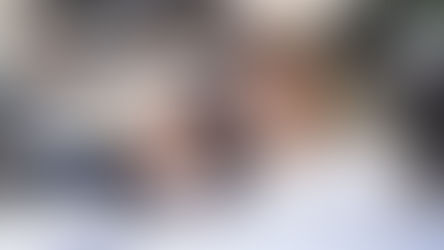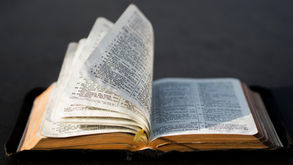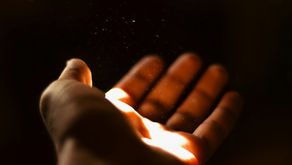Shrine of the Bab
- Uplifting Words
- Dec 27, 2018
- 6 min read
Updated: Sep 3, 2021

The Shrine of the Bab, one of Haifa's most prominent landmarks, is the Faiths second holiest Shrine. It is the resting-place of the Bab, regarded by Baha'is as a messenger of God whose primary mission was to prepare the way for the coming of Baha'u'llah. The terraces of the Shrine of the Bab, opened to the public in June 2001, were designed to provide an appropriate setting and approach for pilgrims and visitors to this Baha'i Holy Place.
During His visit to Mount Carmel in 1891, Bahá’u’lláh stood near a circle of cypress trees and showed ‘Abdu’l-Bahá where the tomb of the Báb should be built.
Because of His challenging teachings, which called for spiritual and moral renewal, the Bab was publicly martyred in 1850. His remains were preserved and concealed for almost 60 years, eventually transferred to the Holy Land, and in 1909 interred in a mausoleum on the slopes of Mount Carmel. The colonnade and golden dome over the mausoleum were completed in 1953. Their design, by a Canadian architect, William Sutherland Maxwell, harmonizes eastern and western proportions and style. The Shrine is a place for quiet prayer and meditation where no ceremonies or religious services are held. A special prayer used by Baha'is when visiting the Shrine, known as the Tablet of Visitation is hung on the wall in both the original Arabic and an English translation.
In honor of his services, Mr. Leroy Ioas was given the inestimable gift of having a door of the Shrine of the Bab named after him by Shoghi Effendi. The Bab-i-Ioas, the door named after Mr. Ioas, can be seen in this photograph of the Shrine of the Bab. Read more on Leroy Ioas >
"The outermost circle in this vast system, the visible counterpart of the pivotal position conferred on the Herald of our Faith, is none other than the entire planet. Within the heart of this planet lies the “Most Holy Land,” acclaimed by ‘Abdu’l-Bahá as “the Nest of the Prophets” and which must be regarded as the center of the world and the Qiblih of the nations. Within this Most Holy Land rises the Mountain of God of immemorial sanctity, the Vineyard of the Lord, the Retreat of Elijah, Whose return the Báb Himself symbolizes. Reposing on the breast of this holy mountain are the extensive properties permanently dedicated to, and constituting the sacred precincts of, the Báb’s holy Sepulcher. In the midst of these properties, recognized as the international endowments of the Faith, is situated the most holy court, an enclosure comprising gardens and terraces which at once embellish, and lend a peculiar charm to, these sacred precincts. Embosomed in these lovely and verdant surroundings stands in all its exquisite beauty the mausoleum of the Báb, the shell designed to preserve and adorn the original structure raised by ‘Abdu’l-Bahá as the tomb of the Martyr-Herald of our Faith. Within this shell is enshrined that Pearl of Great Price, the holy of holies, those chambers which constitute the tomb itself, and which were constructed by ‘Abdu’l-Bahá. Within the heart of this holy of holies is the tabernacle, the vault wherein reposes the most holy casket. Within this vault rests the alabaster sarcophagus in which is deposited that inestimable jewel, the Báb’s holy dust. So precious is this dust that the very earth surrounding the edifice enshrining this dust has been extolled by the Center of Bahá’u’lláh’s Covenant, in one of His Tablets in which He named the five doors belonging to the six chambers which He originally erected after five of the believers associated with the construction of the Shrine, as being endowed with such potency as to have inspired Him in bestowing these names, whilst the tomb itself housing this dust He acclaimed as the spot round which the Concourse on high circle in adoration."
"In the same year that this precious Trust reached the shores of the Holy Land and was delivered into the hands of ‘Abdu’l-Bahá, He, accompanied by Dr. Ibráhím Khayru’lláh, whom He had already 275 honored with the titles of “Bahá’s Peter,” “The Second Columbus” and “Conqueror of America,” drove to the recently purchased site which had been blessed and selected by Bahá’u’lláh on Mt. Carmel, and there laid, with His own hands, the foundation-stone of the edifice, the construction of which He, a few months later, was to commence. About that same time, the marble sarcophagus, designed to receive the body of the Báb, an offering of love from the Bahá’ís of Rangoon, had, at ‘Abdu’l-Bahá’s suggestion, been completed and shipped to Haifa."
"Within a few months of the historic decree which set Him free, in the very year that witnessed the downfall of Sulṭán ‘Abdu’l-Ḥamíd, that same power from on high which had enabled ‘Abdu’l-Bahá to preserve inviolate the rights divinely conferred on Him, to establish His Father’s Faith in the North American continent, and to triumph over His royal oppressor, enabled Him to achieve one of the most signal acts of His ministry: the removal of the Báb’s remains from their place of concealment in Ṭihrán to Mt. Carmel. He Himself testified, on more than one occasion, that the safe transfer of these remains, the construction of a befitting mausoleum to receive them, and their final interment with His own hands in their permanent resting-place constituted one of the three principal objectives which, ever since the inception of His mission, He had conceived it His paramount duty to achieve. This act indeed deserves to rank as one of the outstanding events in the first Bahá’í century."
"When all was finished, and the earthly remains of the Martyr-Prophet of Shíráz were, at long last, safely deposited for their everlasting rest in the bosom of God’s holy mountain, ‘Abdu’l-Bahá, Who had cast aside His turban, removed His shoes and thrown off His cloak, bent low over the still open sarcophagus, His silver hair waving about His head and His face transfigured and luminous, rested His forehead on the border of the wooden casket, and, sobbing aloud, wept with such a weeping that all those who were present wept with Him. That night He could not sleep, so overwhelmed was He with emotion."
“Every stone of that building, every stone of the road leading to it,” He, many a time was heard to remark, “I have with infinite tears and at tremendous cost, raised and placed in position.” “One night,” He, according to an eye-witness, once observed, “I was so hemmed in by My anxieties that I had no other recourse than to recite and repeat over and over again a prayer of the Báb which I had in My possession, the recital of which greatly calmed Me. The next morning the owner of the plot himself came to Me, apologized and begged Me to purchase his property.”
“The most joyful tidings is this,” He wrote later in a Tablet announcing to His followers the news of this glorious victory, “that the holy, the luminous body of the Báb … after having for sixty years been transferred from place to place, by reason of the ascendancy of the enemy, and from fear of the malevolent, and having known neither rest nor tranquillity has, through the mercy of the Abhá Beauty, been ceremoniously deposited, on the day of Naw-Rúz, within the sacred casket, in the exalted Shrine on Mt. Carmel… By a strange coincidence, on that same day of Naw-Rúz, a cablegram was received from Chicago, announcing that the believers in each of the American centers had elected a delegate and sent to that city … and definitely decided on the site and construction of the Mashriqu’l-Adhkár.”
"I cannot at this juncture over emphasize the sacredness of that holy dust embosomed in the heart of the Vineyard of God, or overrate the unimaginable potencies of this mighty institution founded sixty years ago, through the operation of the Will of, and the definite selection made by, the Founder of our Faith, on the occasion of His historic visit to that holy mountain, nor can I lay too much stress on the role which this institution, to which the construction of the superstructure of this edifice is bound to lend an unprecedented impetus, is destined to play in the unfoldment of the World Administrative Center of the Faith of Bahá’u’lláh and in the efflorescence of its highest institutions constituting the embryo of its future World Order. "
The Shrine of `Abdu'l-Baha
In the 78th year of His age, in the early hours of the 28th of November, 1921, `Abdu'l-Baha, the appointed Head of the Baha'i Faith, passed away in His home in Haifa. His remains were laid to rest in the northern room of the Shrine of the Bab. Another prayer used by Baha'is when visiting the Shrine of Abdu'l-Baha, also referred to as the Tablet of Visitation is hung on the wall in both the original Arabic and an English translation. > READ MORE





















